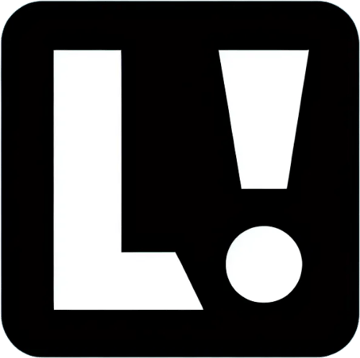How do you ensure good ideas don’t get lost in the shuffle?
"After assigning a task, I said, 'Let me know if you need help.' My team member replied, 'Can I let you know before it’s a problem?' That’s when I realized proactive support matters more."
COMMUNICATION AND MEETINGS
Lead by Example
1/26/20254 min read


The Significance of Follow-Ups in Meetings
Effective leadership often hinges on the quality of communication during meetings. In many instances, brainstorming sessions generate a multitude of innovative ideas; however, without adequate follow-up, these ideas can quickly become sidelined and forgotten. The phenomenon of 'idea parking,' where concepts are temporarily set aside for future discussion, can result in a significant loss of valuable input. This is particularly critical in high-paced environments where attention may shift rapidly from one topic to another. Thus, establishing a follow-up mechanism becomes vital for maintaining momentum and ensuring that no valuable insights are overlooked.
Research indicates that follow-ups are essential for enhancing the productivity of meetings. In a study conducted by organizational communication experts, it was found that teams that employed a structured follow-up approach reported a 30% increase in the implementation of suggested ideas compared to teams that did not. This underscores the necessity of documenting ideas during meetings and revisiting them in subsequent gatherings. Effective leaders recognize that simply stating an idea doesn't ensure its potential will be realized; a dedicated follow-up plan is necessary to foster a culture of accountability and engagement.
Additionally, anecdotes from various organizations highlight the tangible benefits of establishing a follow-up protocol. For example, a tech startup that implemented a system of follow-up emails detailing discussed topics noticed an improvement in team engagement and project outcomes. Participants were more likely to feel valued as their contributions were tracked and revisited, contributing to a stronger sense of ownership and collaboration. As the leadership landscape continues to evolve, the significance of follow-ups in meetings remains a cornerstone of successful communication strategies, ensuring that innovative ideas do not merely vanish into obscurity but instead lead to meaningful action and progress.
Creating a Follow-Up Culture
Establishing a follow-up culture within an organization is fundamental for effective leadership and ensuring that promising ideas do not fade away. Leaders play a pivotal role in fostering an environment where following up on discussions is not merely an afterthought but an integral part of the workflow. One of the practical strategies to promote this culture is to schedule dedicated time in team meetings or check-ins specifically for revisiting past ideas and discussions. By allocating time for follow-ups, leaders signal their importance and encourage team members to share updates or insights on previous topics.
In addition to dedicating time, implementing tools that help track unresolved discussions can significantly enhance the follow-up process. Project management software, shared digital platforms, or reminder applications can assist leaders and teams in keeping conversations active. These tools can foster accountability by prompting team members to address outstanding issues or revisit innovative ideas during regular intervals. The visibility of these tasks fosters a sense of ownership among team members, promoting the idea that everyone plays a role in moving concepts forward.
Emphasizing follow-ups also fosters a culture of open communication, wherein team members feel confident to express their opinions and build upon one another's ideas. This collaborative atmosphere can enhance team creativity and lead to more comprehensive solutions and initiatives. A well-established follow-up culture ultimately leads to improved accountability, ensuring ideas are carefully evaluated and not left behind. Consequently, leaders who prioritize follow-ups demonstrate their commitment to supporting their team and nurturing an environment where innovation can thrive.
Tools and Techniques for Effective Follow-Ups
In the realm of leadership, ensuring that good ideas are captured and revisited is crucial. Various tools and techniques can facilitate effective follow-ups, supporting leaders in creating a culture of accountability and continuous improvement. One of the most prominent tools in this context is project management software. Platforms such as Trello, Asana, or Microsoft Teams offer functionalities that enable leaders to assign tasks, set deadlines, and track progress. By employing these platforms, leaders can ensure that important discussions during meetings translate into actionable items that are monitored over time.
In addition to project management tools, collaborative platforms like Slack or Google Workspace provide a dynamic space for ongoing discussions and document sharing. These tools enhance communication, allowing teams to engage in real-time follow-ups on ideas generated. By fostering an open dialogue, leaders can encourage team members to contribute further insights that may emerge after initial discussions, ensuring concepts are fully explored and not forgotten.
Moreover, simple techniques such as taking meeting minutes and assigning action items can significantly improve follow-up efficiency. During meetings, designated note-takers can document key points, decisions made, and responsibilities assigned. Distributing these meeting minutes shortly after the gathering not only reinforces what was discussed but also creates a reference point for future follow-ups. Action items should be clearly identified, with specific individuals accountable for their completion, thereby fostering a sense of responsibility and urgency.
Incorporating these tools and techniques into regular leadership practice can enhance the effectiveness of follow-ups, thereby ensuring that valuable ideas do not get lost in the organizational process. The goal is to create a structured system that not only captures insights but also drives them to fruition through timely communication and accountability.
Real-Life Examples of Successful Follow-Up Practices
Effective follow-up practices play a crucial role in transforming good ideas into tangible results within an organization. One notable example can be observed in the tech giant Google, which has continually demonstrated the benefits of implementing structured follow-ups. Google operates through a culture of open communication, where employees are encouraged to share innovative ideas during brainstorming sessions. These sessions are followed by scheduled check-ins, where teams review the progress of ideas that emerge. This practice not only retains the momentum of creativity but also fosters a sense of accountability among team members.
A case study from a healthcare startup illustrates another effective follow-up strategy. This organization conducted regular post-meeting debriefs to capture insights and reflections on ideas discussed. The team leader ensured that every suggestion was formally acknowledged and assigned a follow-up action, which was documented and shared across the team. As a result, the startup innovated their patient care process, leading to a significant increase in patient satisfaction ratings and improved service delivery.
Furthermore, a testimonial from a marketing executive at a leading firm encapsulates the impact of follow-ups. The executive noted that after implementing a systematic follow-up protocol, the team saw a marked improvement in project completion rates and overall morale. Team members felt more empowered, as they knew their contributions were being actively tracked and utilized. This clear communication of expectations amplified creativity and responsibility within the team, showcasing the importance of follow-up practices in leadership.
These real-world instances exemplify how organizations can harness the power of follow-ups to capitalize on innovative ideas. By learning from such successful implementations, leaders can adopt actionable strategies tailored to their unique environments, fostering a culture of continuous improvement and innovation.
